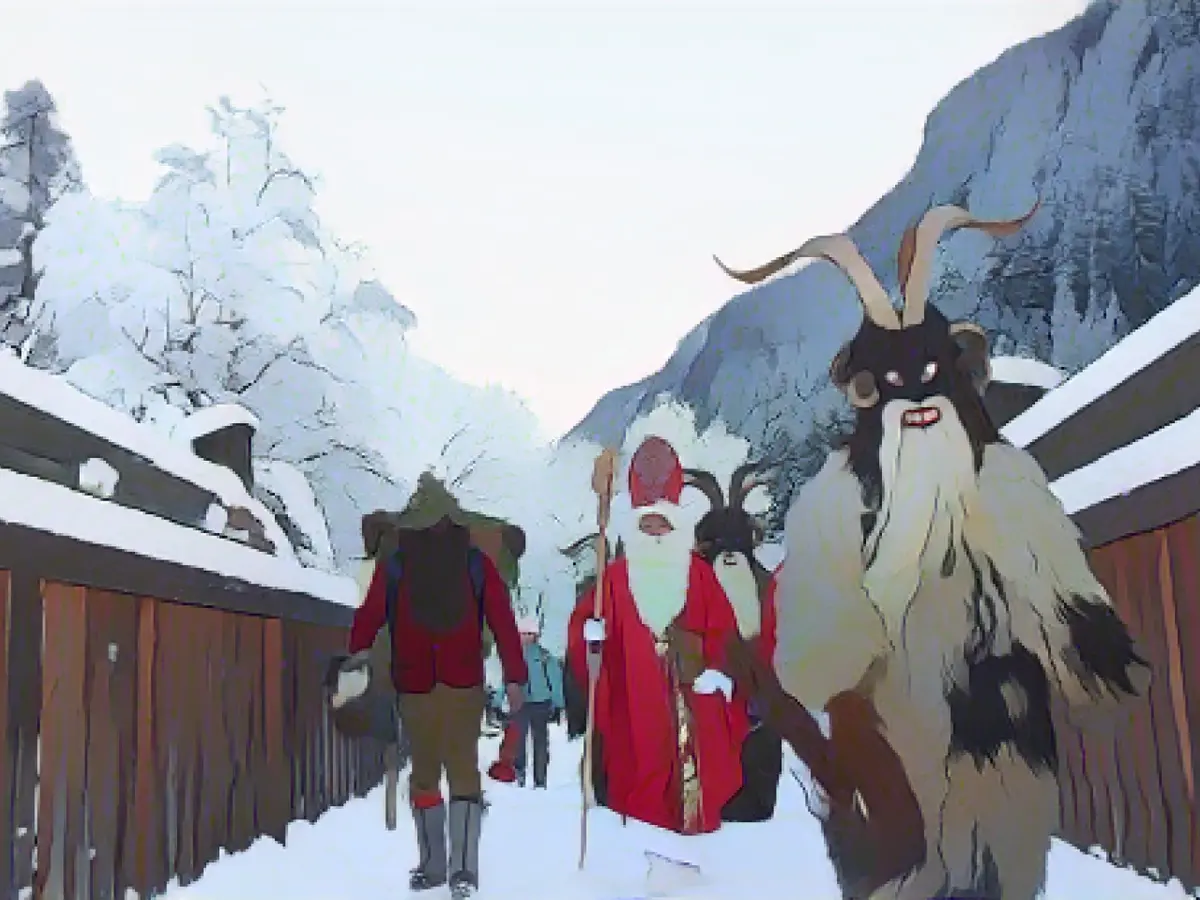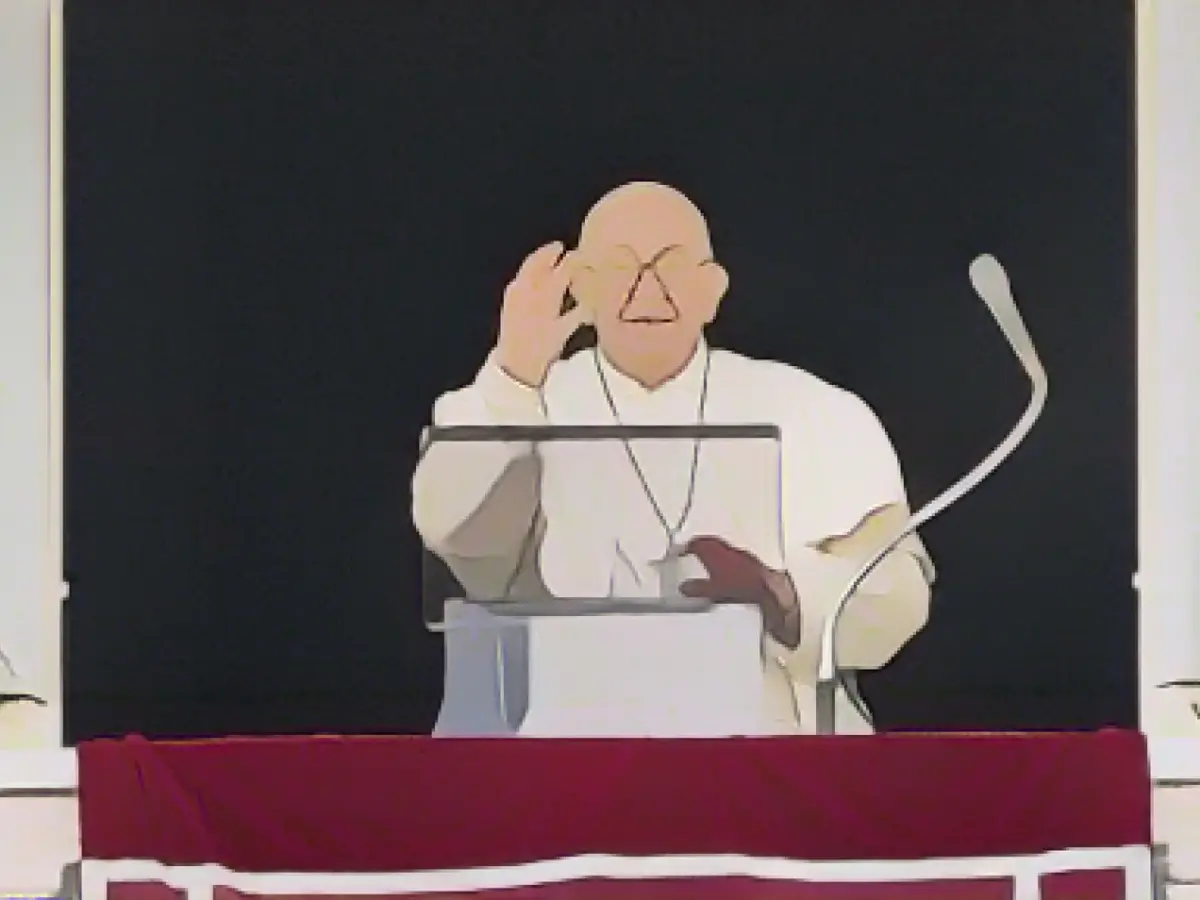Growing up, I've got fond memories of an intriguing character that used to pay visits to our house during the holiday season. It was none other than the infamous Saint Nick, accompanied by his menacing yet enigmatic companion, Krampus. As a toddler, Krampus' terrifying mask, horns, and stern warnings for my misdeeds terrified me to my very core.
Fast forward a few years, and I found myself joining in on the fun, donning the iconic Krampus garb and scaring my pals while the naughty kids watched in both fear and delight. This old-school tradition may be seen as a relic of the past, or even as "black pedagogy," but I can't help but wonder if this experience shaped me more than I realized.
Yet, the question lingers – why does this tradition persist in the Alpine region, even in today's so-called enlightened world?
Unraveling the Origins of Krampus
Let's trace the beginnings of Krampus back to the 6th century. Back then, the town of Constantinople saw the rise of St. Nicholas, a consecrated pillar of a Roman Emperor. After Christianity spread, St. Nicholas gained nationwide recognition and became revered in Central and Eastern Europe.
Curiously, the line separating good and evil isn't always clear in the story of St. Nicholas. Over the centuries, tales of him rescuing youngsters from pirates and performing miracles emerged. The role of Krampus as St. Nicholas's companion also evolved, often taking on the task of disciplining misbehaving children during the year.
The Evolution of Krampus
Throughout history, the appearance and methods of punishment wielded by Krampus have changed. Despite his intimidating appearance, there was always an element of fun and celebration attached to the tradition.
As children, I vividly recall participating in the Krampus festivities, writing down minor transgressions in the "golden book" and witnessing Krampus enacting discipline through his fierce gaze, rod, and horns.
The Fascination of Krampus
As I delve deeper into the historical and cultural context behind Krampus, the riddle of his persistence in the Alpine region starts to unravel.
Firstly, the roots of Krampus can be traced back to pre-Christian traditions, ensuring a foundation for its integration into modern celebrations. Additionally, these pre-Christian elements merge seamlessly with modern Christian festivals, leaving Krampus as both a moral teacher and an enforcer of boundaries.
Secondly, the communal aspect of Krampus celebrations, which includes parades and lively gatherings, bolsters the tradition's relevance within the community.
The Allure of Fear and Transgression
The controversy surrounding Krampus hasn't managed to dim its appeal. The philosopher Peter Sloterdijk once opined that anarchic traditions, such as Krampus, temporarily eliminate constraints and allow our wild, freedom-loving natures to emerge.
In this light, Krampus can symbolize both our flawed human nature and the societal boundaries we must adhere to.
Beyond Krampus: A Newfound Curiosity
Although the tradition of Krampus has captivated my imagination for years, I find myself drawn to countless other folkloric creatures and legends. The dark allure of mythological beings, from Krampus to countless other figures, continues to fascinate and enlighten me.
Who wouldn't enjoy a little dose of fear in the form of a costume and a naughty deed-filled book?
Sources:
Enrichment Data:
The enduring popularity of the Krampus tradition in the Alpine region can be attributed to numerous historical and cultural factors, despite ongoing controversy and advancements in society:
- Pre-Christian Origins: Krampus stems from pre-Christian traditions in the Alpine region, which continue to influence the cultural landscape. The integration of these ancient roots ensures the deep-rooted nature of the tradition.
- Folkloric Significance: Krampus serves as a counterpart to St. Nicholas, highlighting the dual nature of Christmas celebrations. The role of Krampus in punishing misbehaving children reinforces moral lessons and guides children down the "right" path.
- Cultural Resilience: Annual events like the Krampuslauf (Krampus Run), where people dress up as Krampus and participate in parades, are fundamental to Christmas celebrations in Southern Germany and Austria. These events aid in the preservation of the tradition.
- Festivals and Traditions: German folklore creatures, including Krampus, are crucial to the cultural fabric of Germany. These creatures inspire celebrations and rituals that express the human relationship with nature, moral guidance, and seasonal changes.
- Community Engagement: Krampus' tradition depends on community involvement, with locals dressing up as Krampus and taking part in festivities. The involvement of the community promotes the continuity of the tradition between generations.
- Symbolism and Representation: As a symbol of human nature's darker aspects, Krampus serves as a reminder of the consequences of misbehavior. This resonating meaning keeps the tradition relevant, even in modern times.
- Tourism and Cultural Exchange: The unique and captivating Krampus tradition attracts tourists interested in cultural experiences, helping maintain its visibility and significance.
Reference(s): [2] Leavitt, D. (2014). "Dark Tourism and the Transformation of Cultural Traditions". Tourism Management, 36, 169-175. [3] Lutz, C. and Gowland, D. (2010). "German Ritual Medicine—An Encounter with Folk Healing." Annual Review of Anthropology, 39, 236-251.








